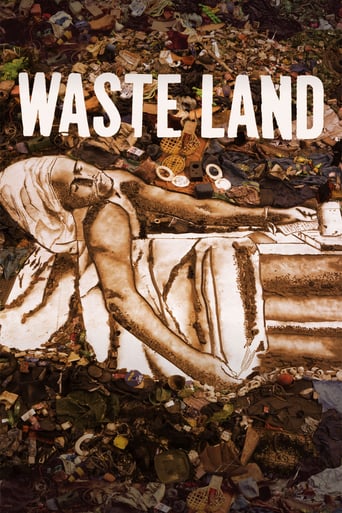


Waste Land
An uplifting feature documentary highlighting the transformative power of art and the beauty of the human spirit. Top-selling contemporary artist Vik Muniz takes us on an emotional journey from Jardim Gramacho, the world's largest landfill on the outskirts of Rio de Janeiro, to the heights of international art stardom. Vik collaborates with the brilliant catadores, pickers of recyclable materials, true Shakespearean characters who live and work in the garbage quoting Machiavelli and showing us how to recycle ourselves.
-
- Cast:


Similar titles


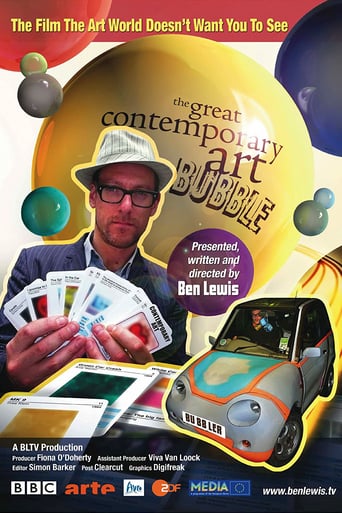

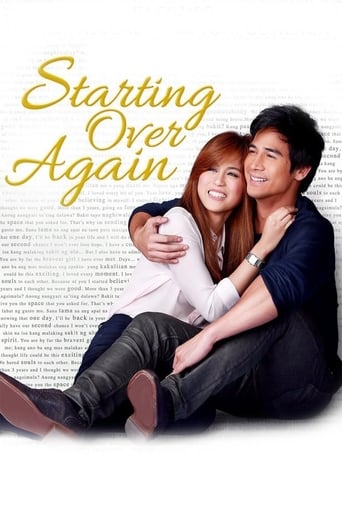


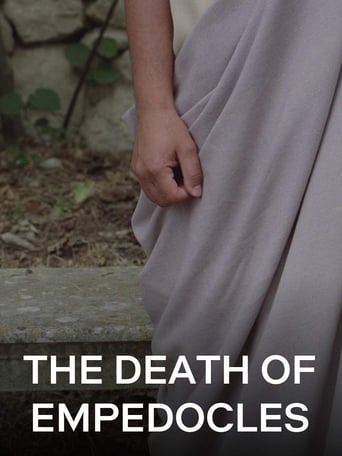
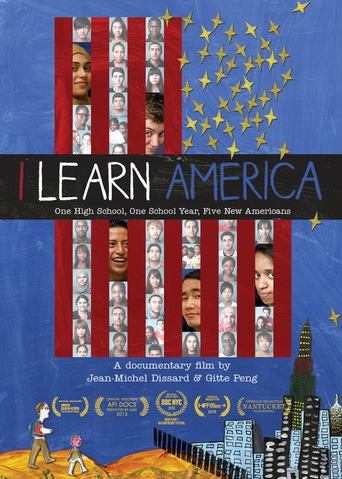
Reviews
That was an excellent one.
If you don't like this, we can't be friends.
I don't have all the words right now but this film is a work of art.
While it doesn't offer any answers, it both thrills and makes you think.
The documentary Wasteland is about the story of how Vik Muniz discovered the art of recycling. He goes to Brazil where he finds people who are known as pickers. Pickers go to a land fill to go through trash and find valuable things that can be recycled. The landfill is the biggest dump place for trash in the entire country. 100% of Brazil's trash ends up in this land fill but only 70 % of the trash is from Rio, where the landfill is located. Sometimes people will even find dead bodies in the landfill. In the movie there were a variety of pickers who each have their own stories about their life and why they choose to be a picker. Pickers deserve more honor than they receive. They would rather go through the landfill than sell drugs or get involved with prostitution. There is one young woman who is a picker and has 2 kids. She decides for her life that she doesn't want to be a prostitute. There was a young man who was the most deceiving about the whole idea of being a picker while no one else believed in him he believed in himself. He was very precise and he achieved what he believed in which was a very influential.The reason why people should watch this is because it's very inspirational and the artwork of what Vik Muniz and the team of pickers did was artistic and innovative. It made it look like it was more than just trash. People who are interested in the art industry should watch this too. Wasteland is the perfect example of a win-win situation.
The title of this documentary is derived from T. S. Eliot's apocalyptic poem The Waste Land, where the world has been polluted by modernity. Director Lucy Walker isn't as bleak about her project because the film has the framework of a simple feel good story. Yet under the surface is anger, hurt and true humanity. It was appreciated through the eyes of artist Vik Muniz who obtained a new perspective on the world. He's extremely wealth and popular but prior to this film he was unsatisfied with his materialist lifestyle. On the edge of Rio de Janeiro is Jardim Gramacho, the world's largest garbage dump. "Catadores" or pickers are people hired by the ACAMJG (Association of Collectors of the Metropolitan Landfill of Jardim Gramacho) to organise the garbage there into recycles so the materials can be sold. Vik initially intended to paint the catadores with rubbish since he is adept in collecting everyday things for his projects. One of his most famous works is called "Sugar Children", where he used sugar from the plantations in St. Kitts to develop images of the children working there. The purpose of this is to retain a tangible connection to his subjects as he constructs the works. It seems to remind him of what he is really illustrating, physically and metaphorically. This same method surfaced during the Waste Land project. He discovered that beneath the rubbish were real people who suffered and sometimes didn't even know their own situations. Vik's wife commented that some of them are in denial and that taking them out of their environments would potentially disrupt their minds. It was a valid point because many of the people working on the landfill had been there since childhood. They scavenged through the enormous rubbish piles willingly but were smart enough to organise it into piles so it could be sold and recycled efficiently. They showed their colour and intelligence to Vik through some of their quotes like '99 cans is not 100' and 'it's not rubbish because it can be recycled'. His empathy is clearly articulated in the documentary. He said that he used to grow up in poverty and suggested that he could have been working in the landfill. This is what developed his connection on camera and why he chose to make them the focus of the works. He auctioned off the paintings he made of them so that he could use the money to improve their lives. One of the most humorous paintings Vik design was a recreation of Jacques-Louis David's "The Death of Marat" in an old tub.The class elements of Waste Land are its most surprising socio-political concerns. Many of the pickers stated they were frowned upon by people, who were not only wealthy, but well-educated Brazilians too. One of the common responses was that they don't care about being dirty because it was a more honest line of work than the prostitution in the area. The pickers in the film are distinguishing because of their courageous attitude but also because their stories are moving too. One of the women commented that she hated working in the landfill. She described how when her son died his body was wrapped in a plastic bag. Another woman recalled how she saw a baby left in the rubbish, which seemed deeply affecting for her because she had children of her own. The hurt beneath these people, who were so diligent towards a thankless task, gives the film emotional pull. It is a nice movie because it's about someone who simply wanted to use his own wealth, status and creativity to do better by others. It's very cleanly photographed and one of the most interesting shots is a wide angle of Vik sitting in his quarters, surrounded by all the junk on his wall, showing his isolation. This is just after he said that he was unfulfilled by how materialistic his life became. The only thing wrong with the film is that the occasional Portuguese subtitles are in a white font, which means that in bright areas they are sometimes impossible to read. If it were a Hollywood picture people would call Waste Land sentimental and predictable. Yet the importance of the documentary is that its subjects and their attitudes are real and that there are still genuinely kind and hardworking people in the world. I find that alone extremely refreshing.
Is a good cause an excuse to produce bad art? Not in my book. And there is even less reason to make a film about it. It's an entertaining watch, I'll give them that. Beautiful shots of a Brazilian dump teeming with pickers and scavenging birds are best viewed from the comforts of you local independent cinema. The music swells to a heartwarming crescendo when the goodhearted artist takes that poor Brazilian waste picker to London on his first journey into the first world. And the artist, being a true philanthropist, doesn't stop at showing handpicked members of the Brasilan underclass, what his flashy world is like, no he makes sure from the start that the final profits of his pictures will go straight to those poor bastards. While the lucky sod breaks down and weeps as the picture is auctioned for 28000 pounds, Vik Muniz even takes the time to give him a short introduction into modern art.What makes this so unbearable to watch is the artist's complete lack of irony and, well shall I say humbleness, and the filmmaker can't be too keen on that either. Fairly early in the proceedings Vik and his wife sit in front of the computer screen that depicts Brasilians largest landfill and the artist announces proudly that this is where he is going to live for the next two years, while he, his wife and the audience knows pretty well that he's not going to do anything of that sort. But now we know what Lucy Walker is trying to tell us and we feel cheated. Namely that here we have a man who deeply cares about his fellow citizens, but if he really was the altruistic person that this film tries to makes us believe, he would have been more concerned about the plight of the people and less with portraying himself as this selfless do-gooder. This culminates in the scene when, towards the end - all the money came in already- the artist asks the black underdog if, at the very beginning when this crazy artist showed up on the dump, and told him about his vision of making art out of garbage, if he (the underdog) had realistically believed it would amount to anything, let alone a major show at the National Museum in Rio, the underdog is humbled into sheer awe, when in fact he should have answered: Well, as you had a full camera team with you, to document every step you did, I had an inkling that the whole thing would have an happy ending:' And maybe he even said something like that but it sure as hell got cut out for the final edit, cause although the director wants us to believe otherwise, the whole thing seems staged.
The first part of this movie has modern Brazilian artist Vik Muniz (based in New York) visiting Jardim Gramacho, one of the world's largest garbage dumps, near Rio de Janeiro. We are introduced to some of the "pickers" who sort through the giant mountains of trash for recyclable materials. One of the messages of the movie for me was to see that the pickers, while living tough lives, are pretty normal people, many with families. Most of them are quite philosophical about their jobs, feeling that they are doing a useful and needed service and getting paid on the order of $20 a day. This first part of the film disabuses you of any stereotypes you may have of the people working in the dump.About a third of the way in it looked to me like this was going to be more of the same, seeing Muniz photograph more workers and talking with them. That was interesting enough, but if that was all that was going to happen, I was on the verge of bailing out. But then I found out what Muniz was really trying to do, which was to create an art work. He projected his photos onto the floor of a large hall, enlarged to a size of about 100 feet by 100 feet. Then he had the subjects of the photos bring in materials from the dump and arrange them artistically around the photo outlines on the floor. The final product was a photo of the arrangements on the floor. Seeing how the people reacted to their artistic efforts was when I became truly taken in. From there the movie held many surprises.Muniz pledged to contribute all monies from the art works resulting from this project ($250,000 at the time of filming) to the improvement of the lives of the pickers. The effect that the experience of working on this project had on the pickers was most interesting. It changed their lives, and the life of Muniz as well--to his surprise. I particularly liked the part where Muniz visits his childhood home in São Paulo and notes that, absent an accident in his youth that had fortuitous consequences, he could easily picture himself as having wound up among the pickers, instead of being a financially successful New York artist. There was an engaging dialog between Muniz and his wife as to whether lives had been changed for the better.The photography often reveals an artist's eye and there is is some original music by Moby that enhances the experience.I don't think I have ever seen a better example of the trans-formative power of art. This film, that I thought was going to be a downer, turned out to be inspiring.
